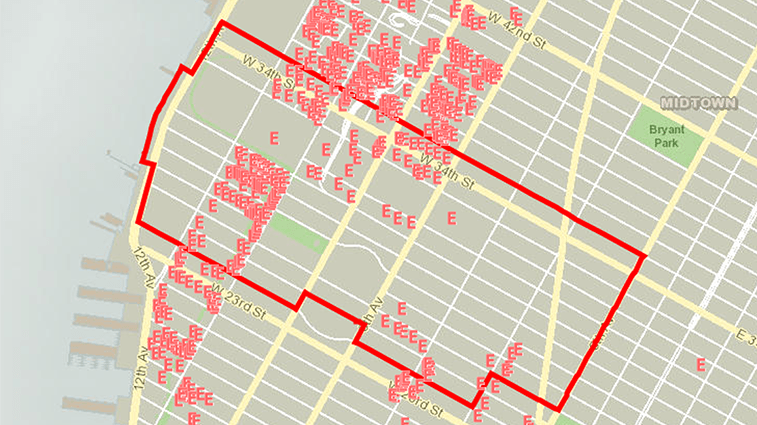
Little e’s, Big Headaches
For New York City buildings, an E-designation can feel like a bad diagnosis. New York City’s Department of City Planning assigns E-designations to tax lots deemed to have hazardous materials, noise, or air quality levels below environmental requirements outlined the City Environmental Quality Review (Appendix C). An E-designation, also known as “little e,” often causes confusion for owners and frustration for design professionals. Owners may be perplexed how they acquired the E-designation. Design professionals working on the property must endure an added process to file jobs, secure permits, or obtain a certificate of occupancy. Knowing the particulars surrounding an E-designation is essential for efficient job filing.
An E-designation isn’t assigned due to any sort of violation or negligence. Its assignation usually arises under banal circumstances. Proximity to gas stations, manufacturing districts, or heavily trafficked streets are common causes for E-designations. The Department of City Planning assigns E-designations during zoning reviews. City Planning completed their most recent zoning review on January 10, 2011. There is an appeal process to remove an E-designation, but usually the way an e-designation is removed is during City Planning’s zoning review.
Finding out if a building has an E-designation is simple. The property profile section of the DOB’s Building Information System (BIS) states the property’s environmental restrictions. In addition, the Office of Environmental Remediation’s Speed website nicely displays properties tagged with E-designations on an interactive map.
When filing for a building permit, a building E-designated must file an initial submittal through the OER. Included in the initial submittals are cover sheets, project descriptions, project drawings, and past ESAs. The OER reviews the documents and determines whether the property qualifies for a Notice of No Objection. Securing of a NNO ends the OER submittal process and clears the job for application filing, permit issuance, and certificates of occupancy.
Design professionals can eschew the initial submittal process and apply for a NNO directly for certain minor alteration work types. If the design professional fails to secure the NNO after initial filing, the OER process continues through subsequent submittals, alternate work and safety plans, subsurface investigations, and a remediation process. This process is common for new buildings and major alterations tagged with an E-designation. Small jobs like Directive 14s that don’t dig up the subsurface usually secure NNOs upon the initial submittal.
The key for an E-designation property during the filing process is to get an early start. For projects that secure the initial NNO the process takes only 30 days. If the NNO isn’t secured, the process can take longer, frustrating design professionals and contractors anxious to get going.
Have a property with a little-e? Have a new project that needs consultation or expediting? Contact us.








